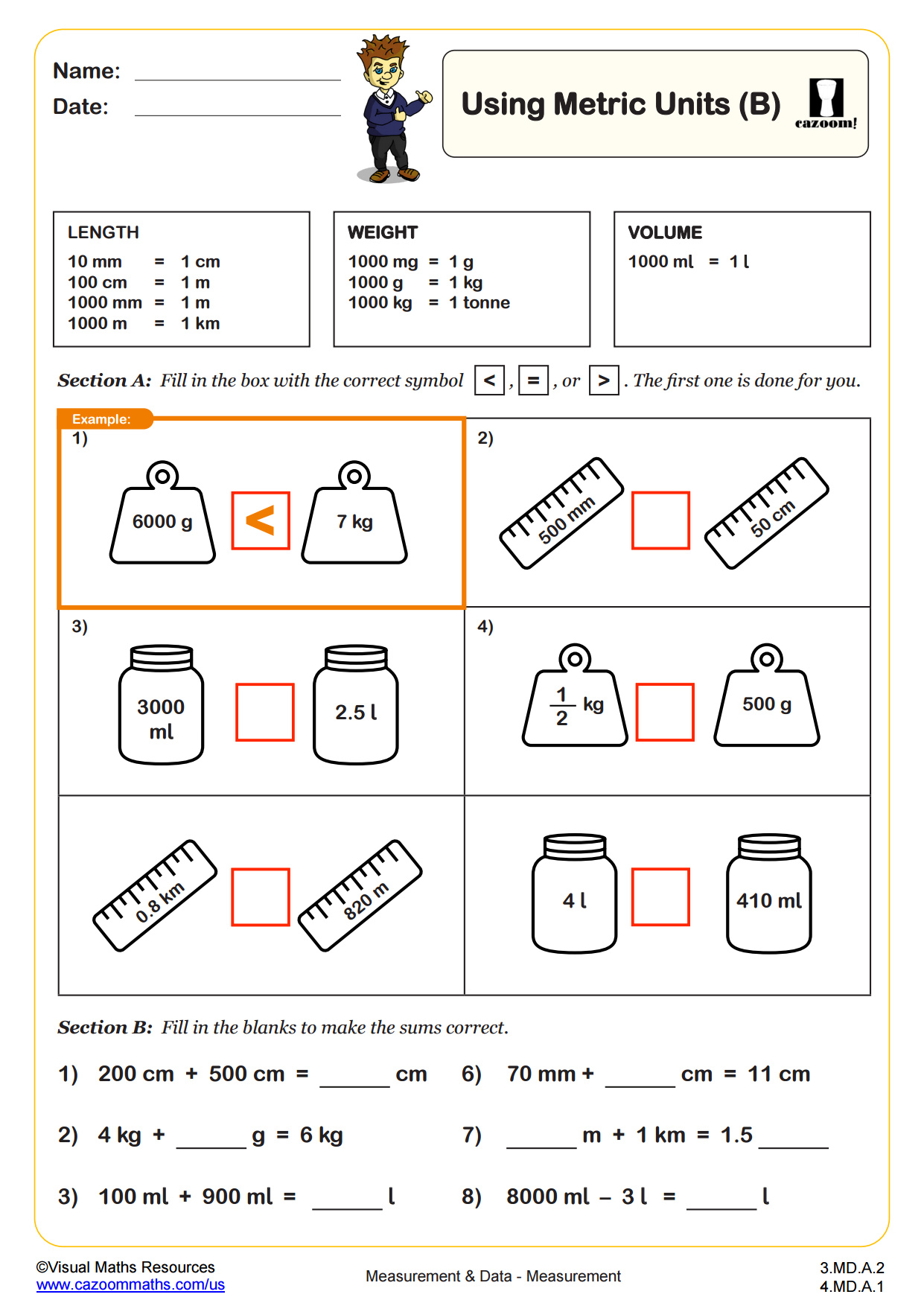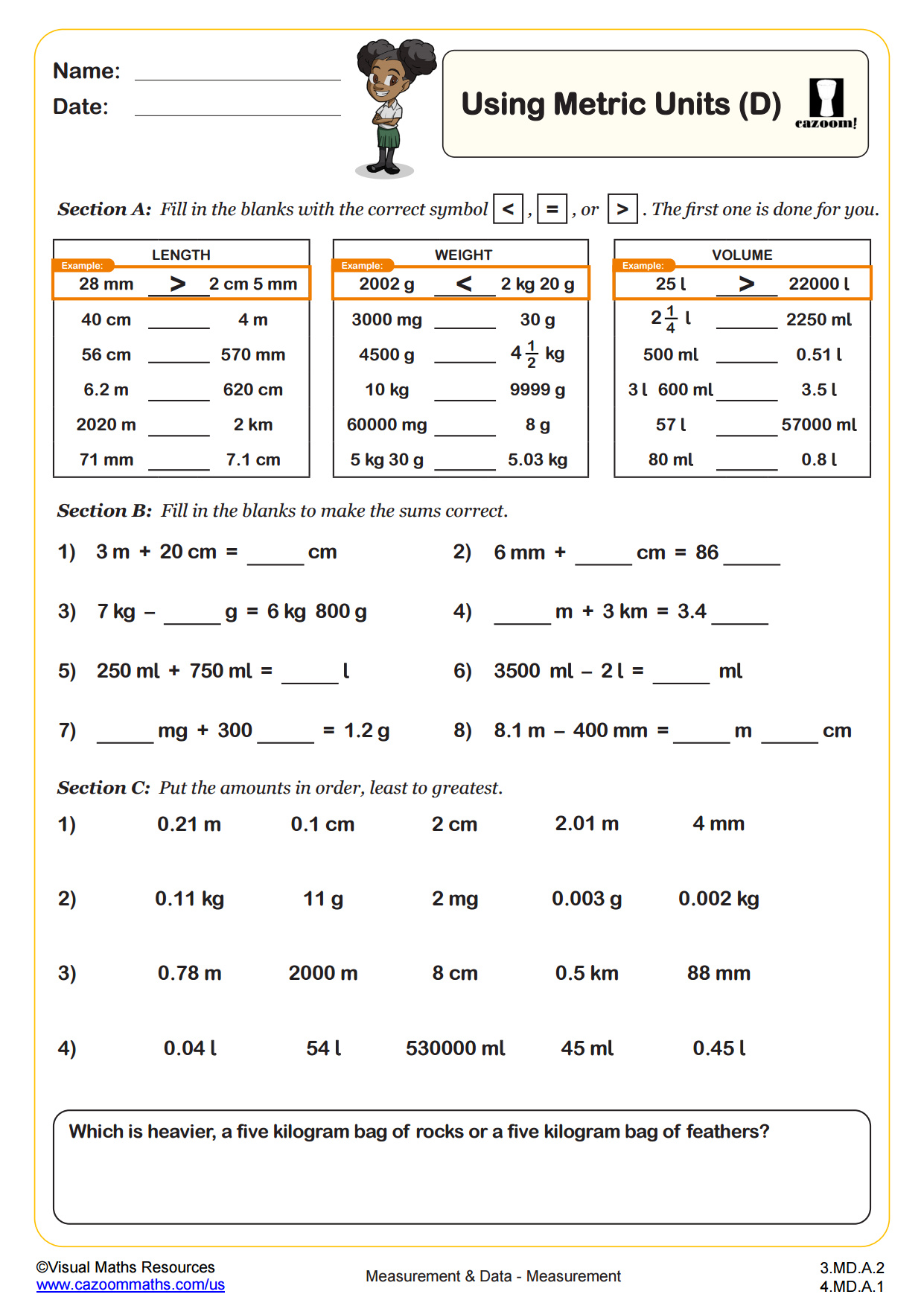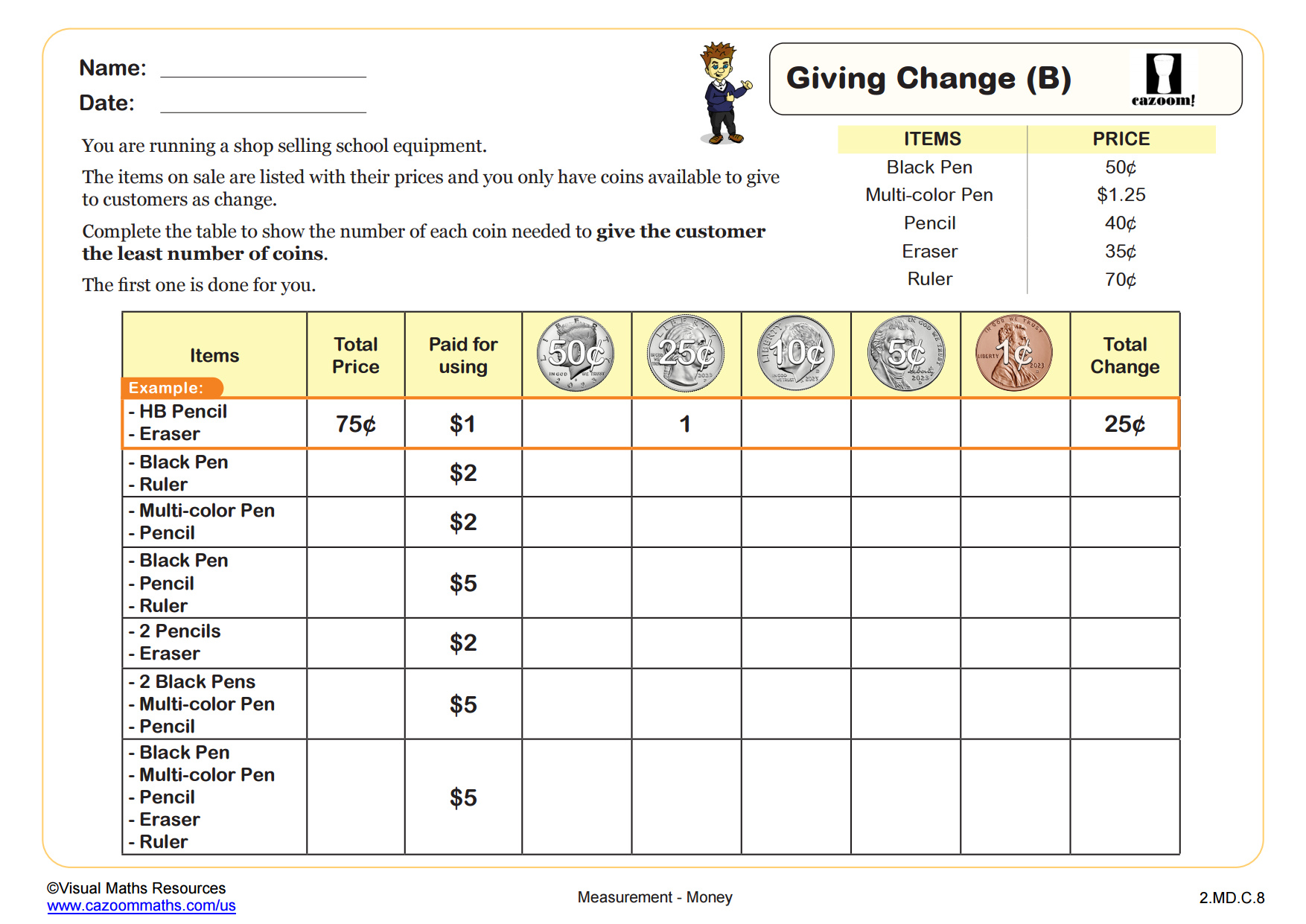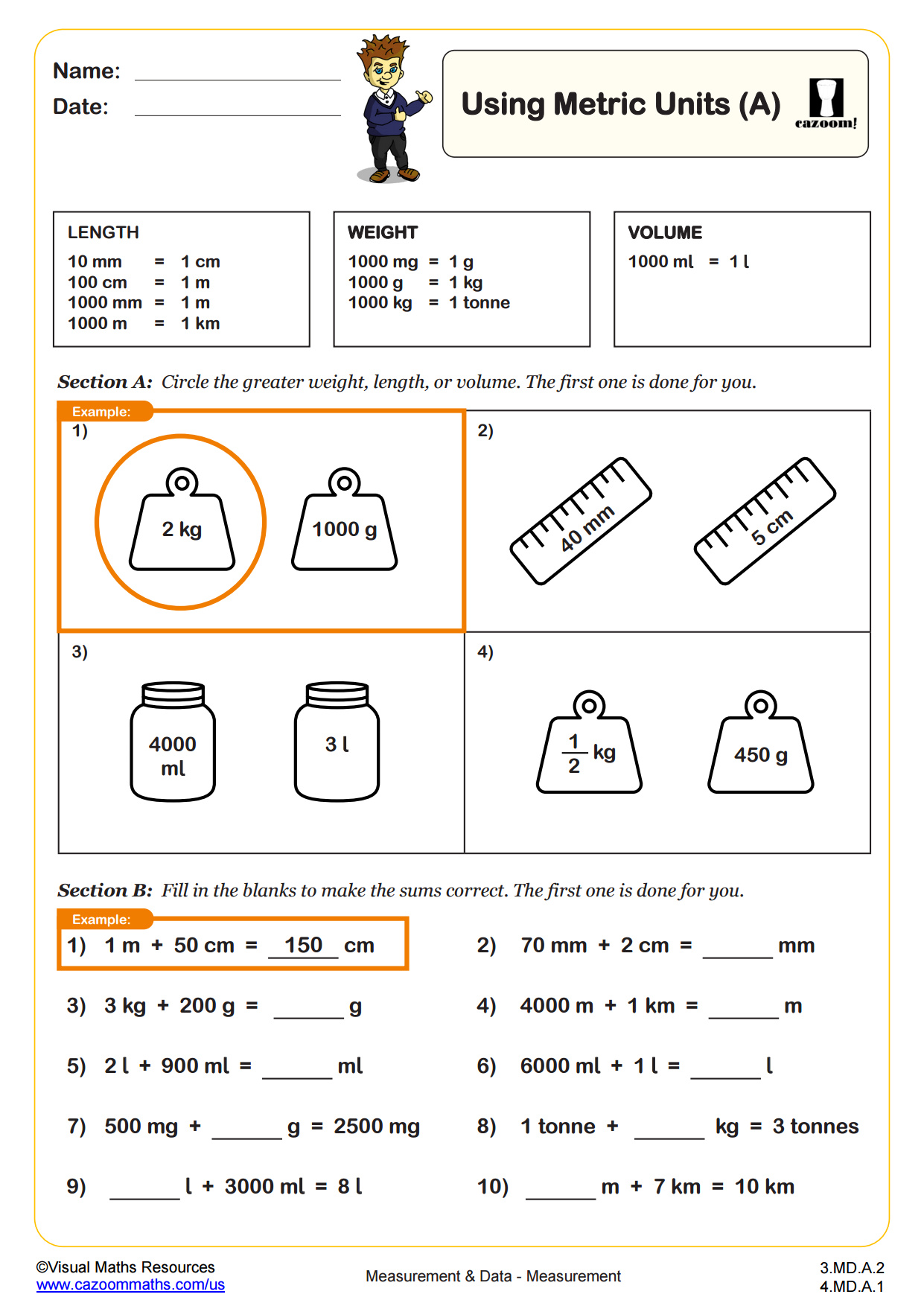Back to:
Using Metric Units (B) WORKSHEET
Suitable for Grades: 3rd Grade, 4th Grade
CCSS: 3.MD.A.2, 4.MD.A.1
CCSS Description: Measure and estimate liquid volumes and masses of objects using standard units of grams (g), kilograms (kg), and liters (l). Add, subtract, multiply, or divide to solve one-step word problems involving masses or volumes that are given in the same units, e.g., by using drawings (such as a beaker with a measurement scale) to represent the problem.
Know relative sizes of measurement units within one system of units including km, m, cm; kg, g; lb, oz.; l, ml; hr, min, sec. Within a single system of measurement, express measurements in a larger unit in terms of a smaller unit. Record measurement equivalents in a two-column table. For example, know that 1 ft is 12 times as long as 1 in. Express the length of a 4 ft snake as 48 in. Generate a conversion table for feet and inches listing the number pairs (1, 12), (2, 24), (3, 36), …
Know relative sizes of measurement units within one system of units including km, m, cm; kg, g; lb, oz.; l, ml; hr, min, sec. Within a single system of measurement, express measurements in a larger unit in terms of a smaller unit. Record measurement equivalents in a two-column table. For example, know that 1 ft is 12 times as long as 1 in. Express the length of a 4 ft snake as 48 in. Generate a conversion table for feet and inches listing the number pairs (1, 12), (2, 24), (3, 36), …
Using Metric Units (B) WORKSHEET DESCRIPTION
Using Metric Measures (B) is the second in a series of four differentiated worksheets where students will compare metric measures and begin to find the sum of measures in different metric units. In this version children will begin to deal with measures in decimal form e.g 2.5 L.

RELATED TO Using Metric Units (B) WORKSHEET
Frequently Asked Questions
This using metric units (b) worksheet is designed for students in 3rd Grade and 4th Grade and aligns with Common Core State Standards.


